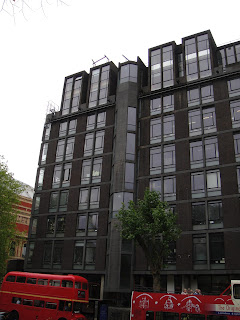This I believe is the Darwin Building, it's next to the Royal Albert Hall in London (in case you were wondering) but I can't tell you any more about it than that. Perhaps because there are several buildings named after the same obscure evolutionary scientist, googlesearching hasn't turned anything up, although I confess I didn't look for so long.
Here are a few blurry and inadequate photos of the Shard on the occassion of its inauguration.
and here's a building adjacent to it which looks like a stage set from an Alien film. I guess it's all temporary works but bit baffling as looks so heavy duty...



























